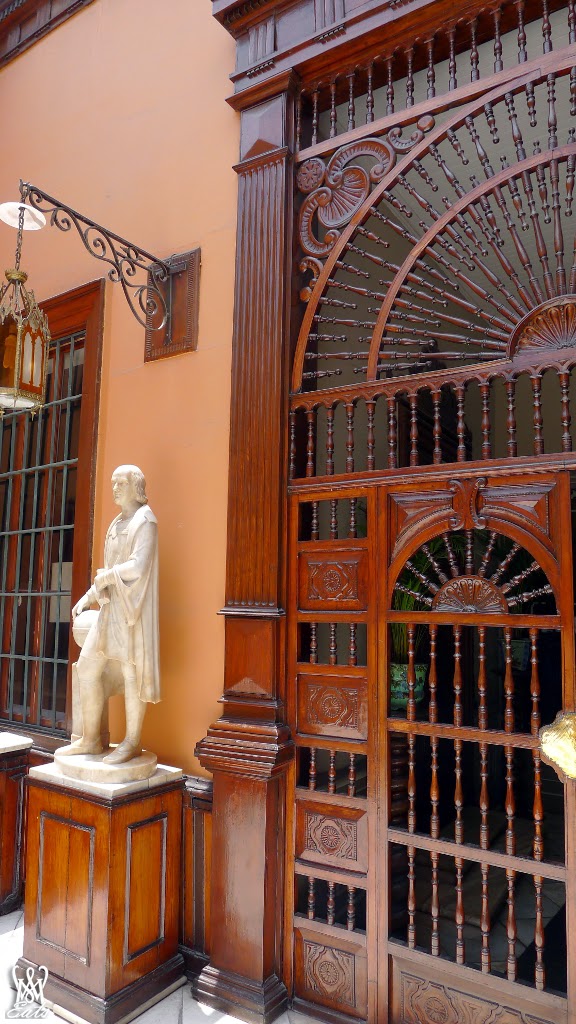 Lima is the capital and the largest city of Peru. It is located in the valleys of the Chillón, Rímac and Lurín rivers, in the central coastal part of the country, overlooking the Pacific Ocean. Once hailed as the "City of Kings" by Spanish conquistadors, Lima's historic streets are sprinkled with Spanish Colonial-style cafés, glass skyscrapers, and grand plazas. Lima is home to the oldest continuously functioning university in the Americas called the National University of San Marcos, founded in 1551 during Spanish colonial regime.
Lima is the capital and the largest city of Peru. It is located in the valleys of the Chillón, Rímac and Lurín rivers, in the central coastal part of the country, overlooking the Pacific Ocean. Once hailed as the "City of Kings" by Spanish conquistadors, Lima's historic streets are sprinkled with Spanish Colonial-style cafés, glass skyscrapers, and grand plazas. Lima is home to the oldest continuously functioning university in the Americas called the National University of San Marcos, founded in 1551 during Spanish colonial regime. |
| View of Playa Miraflores. |
Despite being located in the tropics and in a desert, Lima's proximity to the cool waters of the Pacific Ocean leads to temperatures much cooler than those expected for a tropical desert, and can be classified as a mild desert climate - basically, it is neither cold nor very hot, and rarely rains. The very next morning we ubered to Miraflores to walk around and view the ocean. The beach below the cliffs reminded me of those in San Diego, California.
You can't come to Lima without sampling Peru's most famous dish—ceviche. La Mar Cebicheria was our first stop for lunch and our first taste of this famous dish. We later had a more fresh version at Chez Wong.
 |
| Making adobe bricks at Huaca Pucllana. |
After lunch, we visited Huaca Pucllana - one of the main archaeological attractions in Lima. It's convenient location right on the heart of Miraflores district makes it a popular stop among national and foreign travelers. With its adobe and clay structures, this site served as an important ceremonial and administrative center for the Lima Culture, a society which developed in the Peruvian Central Coast between the years of 200 AD and 700 AD.
The next morning, we visited the Plaza Mayor or Plaza de Armas of Lima, which is the birthplace of the city of Lima, as well as the core of the city. Located in the Historic Centre of Lima (which was added to the UNESCO World Heritage List in 1991), it is surrounded by the Government Palace, Cathedral of Lima, Archbishop's Palace of Lima, the Municipal Palace, and the Palace of the Union. We happened to arrive in time to witness the changing of the guard.
 |
| An alter inside Saint Francis church. |
Pardo's Chicken claims it serves the best pollo a la brasa in Peru, and its large servings are easy to share and inexpensive; they come along with fries and some greens and is where we chose to have lunch.
A great number of Chinese immigrants, and a lesser number of Japanese, came to Lima and established themselves in the Barrios Altos neighborhood near downtown Lima. Lima residents refer to their Chinatown as Calle Capon, and the city's ubiquitous Chifa restaurants – small, sit-down, usually Chinese-run restaurants serving the Peruvian spin on Chinese cuisine – can be found by the dozens in this Chinese enclave. We dined at a more upscale Chifa called Madam Tusan.
 |
| The interior door to Casa de Aliaga. |
The Larco Museum is a privately owned museum of pre-Columbian art, located in the Pueblo Libre District of Lima. The museum is housed in an 18th-century vice-royal building built over a 7th-century pre-Columbian pyramid. It showcases chronological galleries that provide a thorough overview of 4,000 years of Peruvian pre-Columbian history. The Gold and Silver Gallery showcases the largest collection of jewelry used by many notable rulers of pre-Columbian Peru. It comprises a collection of crowns, earrings, nose ornaments, garments, masks and vases, finely wrought in gold and decorated with semi-precious stones. Ancient Peruvian cultures represented their daily lives in ceramics, and this gallery holds the world's largest collection of erotic ceramics.
A sobering view are of all the pueblos jóvenes, or vast shanty towns, on the outskirts of Lima. They are populated almost exclusively by Black, Amerindian, and mestizo campesinos who since the 1940s have migrated in great waves from Peru's countryside in search of economic opportunity. Most of them also came in order to escape terrorism during the 1980s. The towns are composed of poorly constructed shacks which generally lack running water, and other basic services although electricity is usually available on a pirated DIY basis. In both appearance and culture, they are similar to the favelas of Brazil and other Latin American cities, where crime is rampant.
Here is a map of all the stops we made in Lima - feel free to use it to build your own itinerary:
For more details on our Lima eats check out my restaurant reviews. We really enjoyed the sunny Lima weather, and great food. It was interesting to learn about the history of this South American city. Read more of our adventure in Peru, as we continue on to Cuzco and conquer Machu Picchu! Have you visited Lima before? What are some of your favorites things to do and places to eat? Please share in the comments below!






